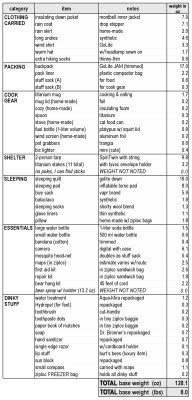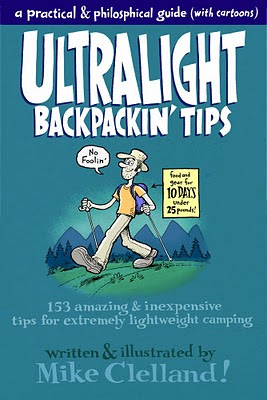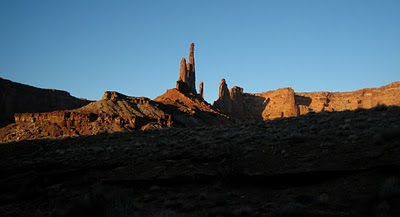
Yours truly brewing coffee while hiking in soggy Alaska
Wanna read a swell reiview of a really cool book? Check this out, by clicking right HERE.











 There is now a series of once-a-week tips on the premier ultralight website, Backpacking-Light.
There is now a series of once-a-week tips on the premier ultralight website, Backpacking-Light. The above list is everything inside the backpack (or gear carried) that makes up the BASE-WEIGHT. This excludes the food and fuel, see the spread-sheet below devoted to the CONSUMABLES. Not that the total BASE-WEIGHT comes in at exactly 8 pounds.
The above list is everything inside the backpack (or gear carried) that makes up the BASE-WEIGHT. This excludes the food and fuel, see the spread-sheet below devoted to the CONSUMABLES. Not that the total BASE-WEIGHT comes in at exactly 8 pounds. This list is the GEAR WORN, and that means items NOT in the backpack. This list is somewhat arbitrary because on a really hot day I might wear a little less (thus slightly more on my back), but this would be the core of my hiking ensembal.
This list is the GEAR WORN, and that means items NOT in the backpack. This list is somewhat arbitrary because on a really hot day I might wear a little less (thus slightly more on my back), but this would be the core of my hiking ensembal.  The above set of spread sheets is to show that consumables are really tho only thing that will impact a hiker's overall PACK-WEIGHT because the core of their gear carried is pretty much the same for an overnight or a 10 day expedition.
The above set of spread sheets is to show that consumables are really tho only thing that will impact a hiker's overall PACK-WEIGHT because the core of their gear carried is pretty much the same for an overnight or a 10 day expedition.




This instructional video features my beautiful hands!

